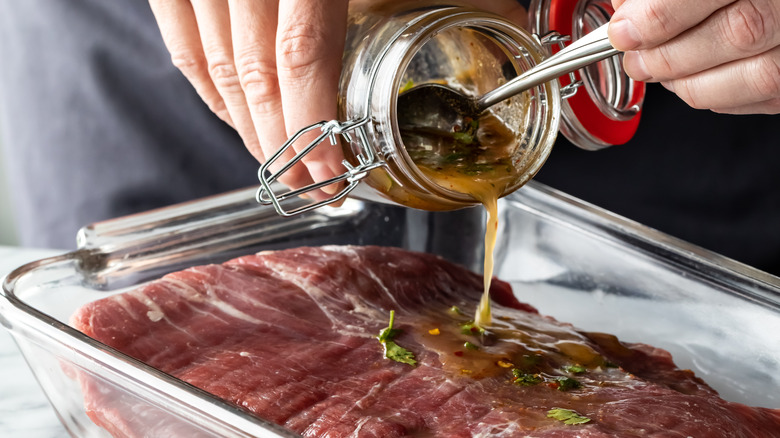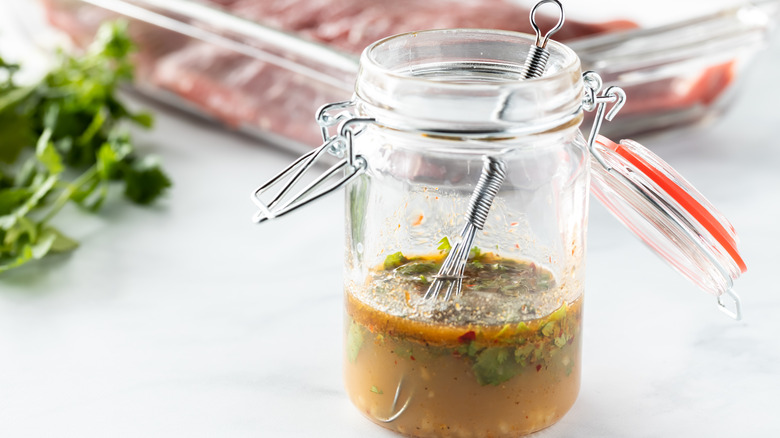The Absolute Best Ratio For Marinade
Marinades make meat marvelously flavourful and succulently tender. But while you might think ingredients can be blindly whisked together to create a winning marinade, it's actually a more complex process. In order to reap the maximum benefits of marination, there's a specific ratio you should always follow.
A combination of fat, acid, and seasonings, Eater explains that marinades are primarily used to infuse flavoring rather than tenderizing, which is characteristic of salt-based brines. That said, both methods do impart taste and play a role in making sure meat stays juicy as it's cooked. However, since marinades are acidic-forward, Allrecipes explains that acidity can break down proteins, allowing the meat to absorb seasoning better.
Aside from lean or tough cuts of meat, filets of fish, sliced tofu, and even vegetables can develop bigger, bolder flavors following immersion in a marinade. However, the timing will vary. According to Utah State University, delicate seafood might need a mere 15 minutes so as not to compromise texture in comparison to a hunk of beef that can soak for 24 hours. As for what's inside the marinade, almost any goes as long so long as you adhere to one ratio.
3 parts fat - 1 part acid - 1 part seasoning
As previously mentioned, the basis of a marinade involves fat, acid, and seasoning. While fat works to maintain moisture and act as a vessel for aromatic and flavorful seasonings, Bon Appétit explains that acidity tenderizes and cuts through the richness. Consequently, these three elements can transform a dish, but only if they're balanced correctly.
To ensure the flavor is properly imparted and that meat softens without becoming mushy, MyRecipes recommends sticking to a ratio of 3 parts fat, 1 part acid, and 1 part seasoning. Adding too much or too little fat or acid can have a major impact on meat, leading to a less pleasing outcome once the meat has been grilled or roasted.
As for which ingredients to use, feel free to experiment. Eating Well suggests fats like vegetable oil, coconut milk, or full-fat yogurt in combination with acids like citrus juices, vinegar, or wine, along with seasonings like garlic, shallots, herbs, chili, mustard, and fish sauce. Even honey could be a nice addition to add some caramelization. Whatever you decide, remember that ratio!

